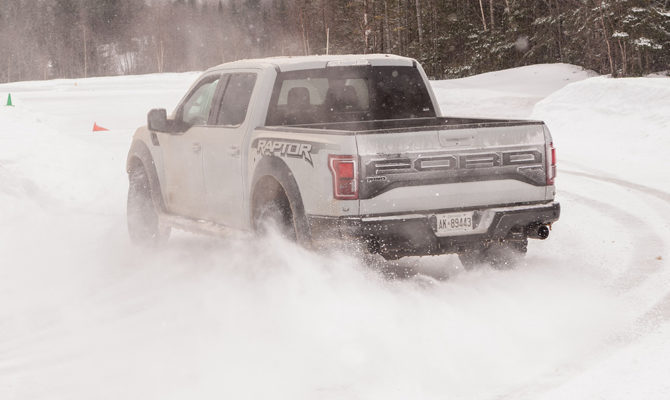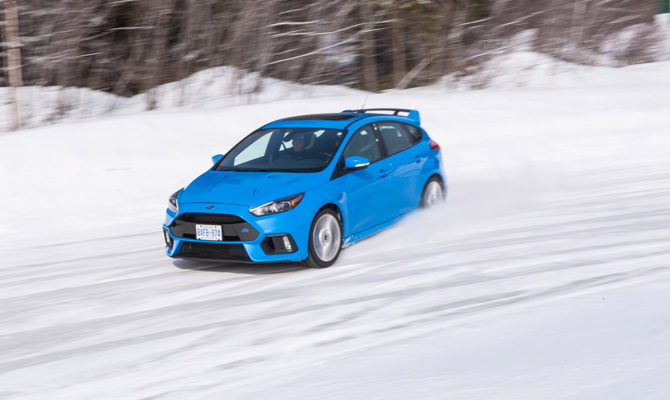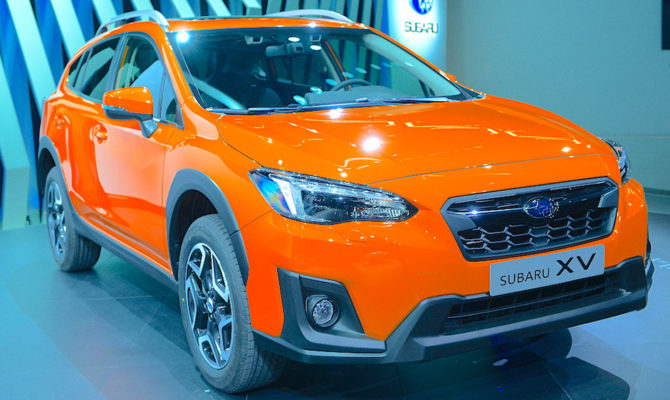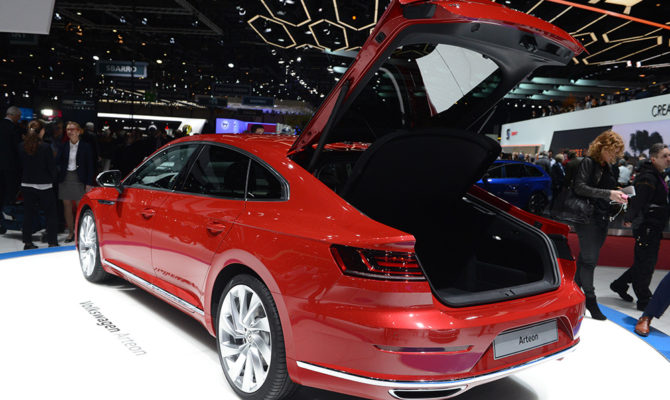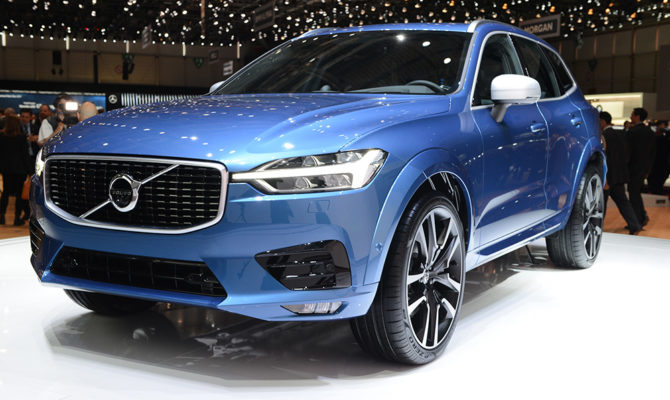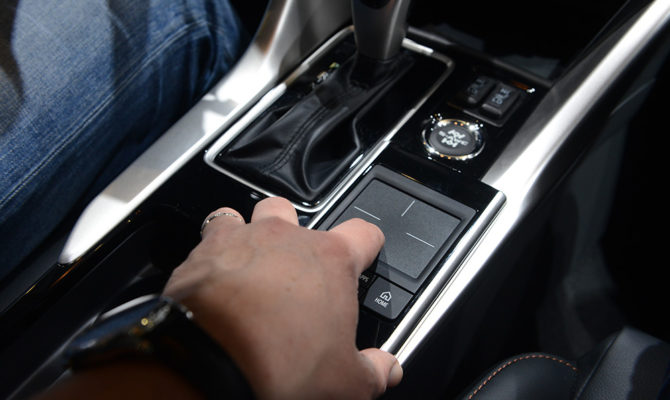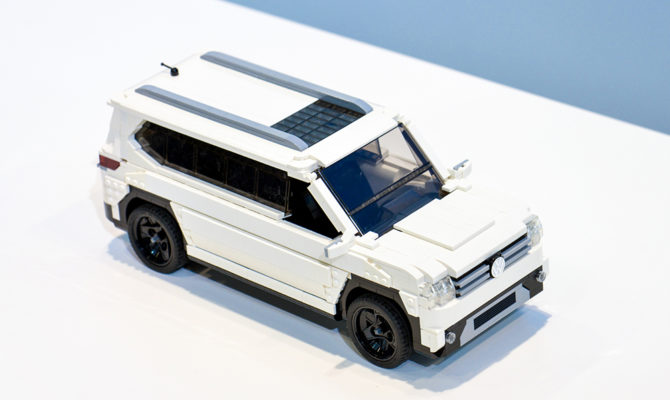New York, NY – Nissan is offering a special early preview of the 2018 370Z Coupe Heritage Edition at the opening this weekend at the New York International Auto Show.
The Heritage Edition honours the iconic Nissan sports car as it approaches its 50th anniversary at the end of the decade since its launch under the Datsun brand.
The special edition also incorporates enhancements, including new headlight and rear combination light treatment, new rear fascia paint scheme, smoke chrome door handles and new EXEDY® high-performance clutch (manual transmission). The 2018 370Z Coupe goes on sale later this spring.


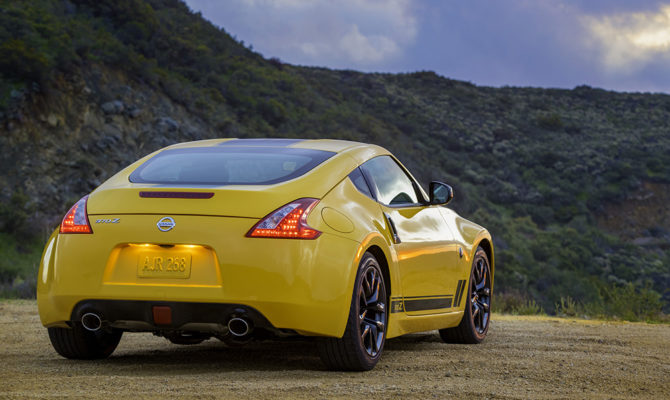

Available on the base 370Z Coupe, the best-selling trim level, the Heritage Edition package is offered in two exterior colors. The Chicane Yellow Heritage Edition features black outside mirrors, gloss black graphics and yellow interior trim. The Magnetic Black Heritage Edition includes gloss silver graphics and yellow interior trim.
“Over the past five decades there have been a number of special Z® trim packages that have added a sense of customization straight off the showroom floor,” said Michael Bunce, vice president, Product Planning, Nissan North America, Inc.
“The new 2018 370Z Heritage Edition honours that tradition, blending it with the modern design and performance of the 2018 370Z. We’re pleased to be debuting the new Heritage Edition in New York, one of the top Z markets from the very beginning.”
This 370Z will be available with a standard 332-horsepower 3.7-litre DOHC V6 engine with Variable Valve Event and Lift Control (VVEL) and a choice of 6-speed manual or 7-speed automatic with Downshift Rev Matching (DRM).
The car will be joined by the new 2017 Nissan GT-R Track Edition at the stand in New York International Auto Show and will be joined by specially-modified Nissan Rogue and Rogue Sport crossovers.
Driveway is at the show and will report next week on the highlights.
keith [dot] morgan [at] drivewaybc [dot] ca
Bentley Motors has unveiled a remarkable ground-breaking new Gigapixel photograph – one of the world’s most detailed landscape images.
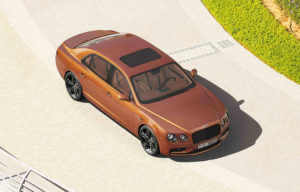

At the heart of the photograph sits a Bentley Flying Spur W12 S in the luxury marina of Dubai – the world’s fastest-growing city. Zoom out, and the groundbreaking NASA-derived technology of the Gigapixel image allows you to explore and experience the city panorama in intricate detail, while beyond it the curvature of the earth is visible.
Zoom in and the image will take you in sharp focus, through the landscape, right up to the instantly recognizable hood badge of the Flying Spur.
With the new Gigapixel image, viewers can also explore the Flying Spur W12 S inside and out with a 360-degree film narrated by John Paul Gregory, Bentley’s Head of Exterior Design. Gregory talks to the audience from inside the car; the stunning Bentley Suite in the The St. Regis Dubai; and the new flagship Bentley retailer on the famous Sheikh Zayed Road.
The Flying Spur W12 S features enhanced power and torque outputs from the mighty 6.0-litre, twin-turbo W12 engine. This increase in power means that the Flying Spur W12 S achieves a top speed of 325 km/h (202 mph) – the first four-door Bentley to exceed the 200-mph performance barrier.
The same attention to detail that is applied to the 130 man-hours it takes to build each Flying Spur went into creating the extraordinary Gigapixel image.
Bentley suspended a camera 264 metres up the Cayan Tower – one of Dubai’s tallest buildings – to capture what is the world’s most detailed landscape image. The innovative technology used had to withstand 40-degree heat that created a haze and 25 km/h winds that threatened to disrupt stability.
An incredible 57.7 billion pixels were carefully stitched together to create a single image that also balanced light levels painstakingly across each pixel. The intricate process took 48 hours and 1,825 frames to create. Downloading the image took a further 18 hours.
You can explore more at www.bentleymotors.com
(Montreal, QC) I am always down for a winter driving experience, let me tell you – and I don’t just mean what I get from everyday life out here in the Paris of the Prairies, Edmonton, either.
Ford Canada structured an event at the renowned Mecaglisse driving facility here in southern Quebec to show of the capabilities of two of the company’s everyday star performers; the 2017 Raptor and Focus RS
Both the Raptor and Focus RS are the progeny of Ford Performance and both are monsters in their respective class – not just on pavement (or in the Raptor’s intended hunting ground, desert) but wouldn’t you know it, both can handle themselves in Canadian winter.
We had a good day for it, too, though it wasn’t looking that way when I arrived in Montreal the day before the event. Like the rest of the country, Quebec has been getting highly variable weather, and where you could normally expect snow we got a day of rain that threatened to sour the winter driving fun; but luck (depending on your definition of ‘luck’) was with us, as the temperature dropped and new snow appeared overnight – covering a thick layer of ice.
The truck was my favourite, of course; the race-running, rally-ready pickup has always been a bundle of fun since its introduction; and the 2017 Raptor brings a new powerplant and transmission to its widened F150 platform.
A 3.5 litre EcoBoost V6 has replaced the eight-cylinder engine of previous generations, with an (also-new) 10-speed automatic transmission marshalling the 450 horsepower output.
Under the tutelage of professional instructors, sliding the lightened Raptor (the 2017 model has shed 227 kilos from the previous) around and ice-and-water course carved into the woods at Mecaglisse proved to be a great deal of fun; and a showcase for not only the power and handling of the vehicle, but the terrain-mode capabilities as well.
There are six programmed modes a driver can select from – as you might expect, the one called “weather” was demonstrated primarily in this exercise – and coupled with an ever-more robust suspension (the Raptor’s standard ‘Fox Shox’ have been enlarged and the length of travel elongated) and exclusive-to-Raptor BF Goodrich KO2 tires, it is up to any off-road challenge.
Which is not to say that a 2017 Raptor can’t mind its manners on regular roads. Take it to the pavement and it provides a ride as smooth (and a cabin as quiet) as, say, an F150 King Ranch; with a passenger environment every bit as well-appointed, I might add.
Now, while the Raptor is a lot of fun on snow and ice, it can’t match the sporty small-car agility of the Focus, especially when kitted out as the 2017 Focus RS (which Ford also brought a small fleet of to the track).
Running on studded tires for our demonstration, it held firm to the sheet of ice beneath our wheels. With a manual gearbox and standard-equip all-wheel drivetrain (which features a really clever torque-vectoring system, designed to modulate the spin of each wheel when you push the Focus RS hard (especially into the icy corners on the track), the car knows how to rock its exceptional power.
The RS is a more aerodynamic and purposefully-designed beast than the standard Focus (and it is also significantly more expensive, coming in at over 50K after taxes and destination fees), made for deep-pocketed buyers with a need for speed.
The centre piece is the 2.3L turbo four-cylinder engine under the hood – potentially 350 horses and a matching 350 lb.-ft. of torque on tap – bolstered with a couple of selectable drive modes; much like the Raptor but with different intent.
There is Track and Drift mode, the results of which are fairly self-explanatory, and the 2017 RS also gets a Launch Control function, for high power takeoffs from a standing start.
I won’t pretend that I mastered them all, of course, I’m not exactly a professional performance driver, but the best thing about situations like this event is that there are extremely talented driving instructors on hand to show wannabes like myself how it is truly done. Right about the time we of the press start to think that we’re getting the hang of handling the Focus RS on the ice, we switch seats and the instructors take us for a hot lap around the course to show us how professionals do it. Good fun indeed!
Frankly, a day of instruction and hands-on demonstrations at the Mecaglisse facility in Ford’s finest high performers is (almost) enough to make me wish winter would stick around a bit longer.
During a short drive in the all-new Chevrolet Bolt electric vehicle, I began to wonder if its creators had discovered the secret to perpetual motion.
When I pulled off the lot, the screen readout indicated the maximum range that day, before a plug-in recharge was needed, would be a maximum of 244 kilometres. A full battery might have pushed the upper limit to 383 kilometres but what the range promised would be more than enough for my jaunt.
If I were heavy footed then I might be lucky to reach 169 kilometres; that would be embarrassing. The number 207 shone brightly through the spokes of the steering wheel. It was the more realistic range based on normal driving style and conditions.
And it offered an irresistible challenge to this competitive son of a gun! – Within a couple of minutes, it fell to 205; mind you the car had motored three clicks. When you lift your foot off the accelerator the car slows smoothly and regenerates electricity to top up the battery. Get the timing right and no more than a touch on the brake is necessary until you close in on the car ahead at the light. One pedal driving – almost!
This was going to be fun. By the time I’d clocked 10 kilometres, the readout had jumped to 209 – more range than when I set out. Cool. Maybe that 244 mark was not so optimistic. Stop and go traffic across town brought me down to earth, so to speak. My 25-kilometre drive came to an end at the recharging station opposite Granville Island Market in Vancouver. Didn’t need to plug it in but f
ree juice is free juice.
No sooner was I out of the car when a guy leapt from the other side of the road, narrowly missing a meet with one of those gas guzzling gas-electric hybrid powered taxi cabs. Just kidding. About it being a gas guzzler that is.
He wanted to know whether I would recommend the crossover-like vehicle. I proudly told him the display should really show a remaining range of 182, not the 190 he saw. Told him that if he couldn’t afford the $42,895 (plus taxes) sticker price (less a $5,000 point of purchase rebate from the Clean Energy Vehicles program) he could enter to win one at the Vancouver International Auto Show (March 28-April 2). Check it out on vancouverinternationalautoshow.com/bolt.
For the record, the gas economy equivalency is 1.8/2.1 L.100km (city/hwy). Green credentials intact, yours truly shopped and returned to drop a bag or two in the surprisingly generous space that lies beneath the rear hatch. Now for a stretch on the freeway, that would surely deplete the battery.
Well, it did and at a faster rate as I sped by some surprised faces at 100 klicks. The Bolt is similar in appearance to many cute utes on the road today but it’s a wolf in sheep’s clothing. The electric power launches the small five door family car at a rate rarely seen off track. In less than seven seconds the needle is closing in on 100 km/h.
The Bolt is loaded with what every family wants in terms of safety equipment and entertainment systems. Available active safety features including Side Blind Zone Alert, Rear Cross Traffic Alert, Forward Collision Alert and Forward Pedestrian Alert.
Jaguar has unleashed its first electric vehicle – the Jaguar I-PACE – onto the streets of London for the first time.
Driving on the streets of London’s famous Olympic Park, the electric performance SUV concept previews the Jaguar brand’s first electric vehicle, the Jaguar I-PACE, which will be revealed in late 2017 and will be on sale in the second half of 2018.

“The feedback on the I-PACE Concept has been fantastic,” said Jaguar Director of Design, Ian Callum. “With the I-PACE Concept we’ve torn up the rule book to create a vehicle with supercar inspired aesthetics, sports car performance and SUV space, in one electric package. It has surprised people and the enthusiasm for our first electric vehicle has been beyond all my expectations.
“Driving the concept on the streets is really important for the design team. It’s very special to put the car outside and in the real-world. You can see the true value of the I-PACE’s dramatic silhouette and powerful proportions when you see it on the road, against other cars.”
The Jaguar design boss says the future of motoring has arrived in the shape of the I-PACE Concept.
Powered by a 90kWh lithium-ion battery, the I-PACE will be able to accelerate from 0-100 km/h in around 4 seconds, with a targeted range of approximately 355 kms. Charging is easy and quick; an 80 percent charge can be achieved in 90 minutes and 100 percent charge achieved in just over two hours using 50kW DC fast charging.
Compact, lightweight electric motors at the front and rear axles generate a combined output of 400HP and 516-lb ft of all-wheel drive torque, putting power down and maintaining traction on a variety of surfaces and weather conditions.
Geneva, Switzerland –The second largest auto show on the European calendar is staged in scenic and historic city on the lake bearing the same name.
Typically, many cars are unveiled here that just don’t make it to our side of the pond but this year was different – several notable reveals will make it here.
Subaru Crosstrek
The Subaru Crosstrek has been a huge hit for Subaru with the highest satisfaction among Subaru owners ever since the original arrived in 2013. The all-new Crosstrek is built on the same Global Platform as the recent Impreza. The goal was to make a much more sophisticated driving car with world class safety. Another major selling feature of Subaru cars is the advanced safety suit called Eye Sight which is available, plus the introduction of dynamic headlamps with auto high beam and low beam. The goal was to achieve the IIHS Top Safety Pick Plus with these new features. The new platform is much more rigid and with a 2.0L direct injection 4-cylinder, standard all-wheel drive and an impressive 220mm of ground clearance, this go anywhere crossover is targeted for city dwellers who like to head out of town on the weekend. The new Crosstrek arrives this summer.
VW Arteon
VW is back in the big car market with a stylish GT sedan with impressive design and a practical layout. The Arteon is a mid-to-full-size four-door sedan with a coupe-like roofline and hatchback layout; like Audi’s A7. Built on an elongated platform shared with the Golf and upcoming Atlas SUV, the Arteon is a foray into the premium space. The Arteon will go on sale in Europe later this year with standard AWD and six available engines. For the Canadian market expect to see the Arteon arrive next year. Engines have not been announced for the Canadian market but a good bet would be a turbo 4-cylinder base engine and an optional V6, as has been announced in the Atlas SUV.
Range Rover Velar
The Velar is based on the same platform as the F-Pace Jaguar cousin but has a design that is all Range Rover. This stunning SUV is placed between the Evoque compact SUV and the Range Rover Sport. For the Canadian market it will be priced, starting at $62,300, which is $12,000 more than the F-Pace. It will be available with a turbo 4-cylinder diesel or a 380hp supercharged V6. Unlike the F-Pace the Velar will be available with an adjustable air suspension for off-road duties. The interior is much more polished than the F-Pace featuring two 10-inch centre screens for car controls and infotainment readouts. The rather sparse interior of the F-Pace is replaced with cloth and quilted accents that do look more upscale. The exterior of the Velar is like the Range Rover Sport and due to the popularity of that vehicle, this smaller option will be a massive hit for Range Rover. The Velar will be available this summer
Volvo XC60
Volvo has been on a vehicle renaissance lately with the highly successful XC90 crossover winning the North American SUV of the Year award last year. For 2017 Volvo hopes to capture lightning in a bottle twice with the smaller XC60. This new version will be available before the end of the year and should be a hit because it looks and shares many of the same components with the award winning larger sibling. The same turbo and supercharged 4-cylinder engine is standard with an available plug-in hybrid model. The interior features the same layout and the same level of finish is present. With a smaller and more agile footprint, plus Volvo’s reputation for advanced safety features will help accelerate the rented interest in the Volvo brand.
Mitsubishi Eclipse Cross
Some might remember the Mitsubishi Eclipse name on a car but the trend these days is to crossovers, so the name has been resurrected on the latest model called Mitsubishi Cross. This all-new crossover will sit between the RVR and Outlander models in size. With a turbocharged 1.5L 4-cylinder engine and continuously variable transmission, the target might be the Honda CR-V with similar tech. The design is sharp and looks like a fastback from some angles. The rear styling is edgy and might be a bit polarizing. The interior is a major step forward with a touch-pad controller for the new centre screen and the materials look fresh and upscale. The Eclipse Cross will arrive towards the end of this year.
The new Infiniti Q50 premium sports sedan made its global debut and Mercedes revealed an eye-catching sports car at the Geneva International Motor Show.
The Hong Kong-based company says its new Q50 features “innovative technologies that empower and support the driver, taking a holistic approach to performance.”
As the company’s core brand-building model and best-selling vehicle worldwide, Infiniti has already introduced several world-first innovations with the existing Q50.
One of the available driver assistance technologies included in the new Q50 is second-generation Direct Adaptive Steering – a steer-by-wire system that supports the driver by providing smooth operation, more direct steering responses and easy maneuverability. Direct Adaptive Steering is a precursor to future steering systems that will form a key building block to achieving fully-autonomous driving.
The Q50 is powered by the award-winning 3.0-litre V6 twin-turbo engine from the new and exclusive ‘VR’ powertrain family, which was recently named on the prestigious 2017 Ward’s ’10 Best Engines’ list.
It also features a refreshed exterior and interior design – bringing the car in line with the brand’s ‘designed to perform’ ethos.
Over at the Mercedes display, there were gasps when, as part of the 50th anniversary of Mercedes-AMG, the covers were ripped off the stunning GT Concept show car.
This four-door coupe heralds a further extension of the AMG GT family, following the legacy of the SLS AMG and AMG GT, which were completely developed at AMG’s headquarters in Affalterbach. The designation and fundamental design elements on the front and rear end denote the family affiliation to the AMG GT. The “EQ Power+” badging on the mirror camera indicates the increased performance that can be expected from hybridization at AMG.
The AMG GT Concept uses a combination of an ultra-modern V8 gasoline engine and a high-performance electric motor, both intelligently networked with an extremely powerful yet lightweight battery concept. This performance hybrid powertrain offers an impressive electric range and the opportunity to generate a system output of up to 805 horsepower in its last level of development, and covers the sprint from 0-100 km/h in less than three seconds.
Pull up to any jobsite with the “Mercedes-Benz Metris MasterSolutions Toolbox Van” and get the job done.
That’s the boast of the Mercedes folks, who launched a concept version at the recent Chicago Auto Show.
Open up the side of the Metris van and the ultimate toolbox on wheels is revealed. It’s equipped with a wide variety of Ranger Design® and Sortimo by Knapheide® shelves, racks and removable cases. The Toobox van has enough storage, utility and capability to power through long hours on the job. A durable tile flooring system has been installed, which ensures grip for work boots and is easily removable for thorough cleaning.
A clear, plastic partition from Ranger Design® keeps the driver safely divided from the cargo area while also allowing for easy monitoring of the van’s payload. Unique wheels, finished in bright blue and silver, realistic toolbox latches and a handle on the roof compliment the special exterior wrap created for the Toolbox Van.
Built by RENNtech, it is based on the Metris WORKER Cargo Van and can carry a payload of more than 1,130 kgs and has a towing capacity of twice that amount.
The standard 2.0- litre turbocharged four-cylinder engine, boasting 208 horsepower and 258 lb-ft of torque, allowing the Metris to accelerate to 100 km/h in about nine seconds. Power is sent to the Metris’ rear wheels for maximum towing capability and cargo hauling.
Mounted to the steering wheel are shift paddles—standard fitment on all Metris Cargo and Passenger vans—which allow the driver to manually change gears, whether in anticipation of a steep hill or to maximize their driving experience on a twisty road.
The Metris Cargo Van achieves 11.2/9.8L//100kms(city/hwy), thanks partly to the efficient
7G-TRONIC seven-speed automatic transmission.
Chrysler brand and BraunAbility are joining forces to design a wheelchair-accessible Chrysler Pacifica minivan.

“Whether it’s a veteran, a colleague, friend or a family member, there’s a good chance we all know someone with a physical disability who needs help getting to the places and events that matter most to them,” said Tim Kuniskis, Head of Passenger Cars, Dodge, SRT, Chrysler and FIAT, FCA North America. “The all-new Chrysler Pacifica is proving to be a lot of things to a lot of people, and now equipped with the BraunAbility technology, it is also the perfect tool to help our customers gain freedom to stay active in their everyday lives.”
The most spacious wheelchair-accessible vehicle in the industry, the BraunAbility Chrysler Pacifica features patent-pending AccessAbility™ technology, including an aerospace-inspired sliding door extension and the industry’s widest side-entry ramp, with rear-axle space innovations and cantilevered seat bases that expand interior cabin space, maximizing space for obstruction-free maneuverability for all sizes and types of wheelchairs. BraunAbility seamlessly integrates with the sophisticated styling of the Chrysler Pacifica. To ensure Chrysler integrity and quality, BraunAbility sources its components through the same suppliers, and crash-tests to the highest automotive standards.
“For over 45 years, BraunAbility and Chrysler have worked together to empower people with physical disabilities, including our founder Ralph Braun, to stay connected to what matters in their lives,” stated Nick Gutwein, President and CEO of BraunAbility. “The need for quality mobility solutions is only going to grow, and we are thrilled to align with Chrysler to launch the innovative and uncompromising BraunAbility Chrysler Pacifica.”
The partnership between Chrysler and BraunAbility includes co-promotion support for the ‘Give a Dog a Job Program’ benefiting Canine Companions for Independence. Trained service dogs are empowering wheelchair users daily by completing everyday activities, including getting in and out of their wheelchair-accessible vehicles. Hundreds are currently on the waitlist to receive a trained assistance dog, which is provided to a person with a disability free of charge.
“BraunAbility and Chrysler Pacifica are a natural fit as a partner for Canine Companions for Independence,” says Canine Companions CEO Paul Mundell. “The synergy between adapted vehicles like the BraunAbility Pacifica and the intelligence and life-changing skills of a Canine Companions assistance dog are seamlessly giving independence — and giving a dog a job.
The BraunAbility Pacifica is the latest in a long line of accessible vehicles engineered between the world leader in mobility and Chrysler. The partnership began more than 45 years ago when BraunAbility founder Ralph Braun, a wheelchair user himself, engineered a hydraulic wheelchair lift and installed it in a full-size Dodge van (a 1972 Dodge B series Ram Van), becoming the world’s first commercialized wheelchair-accessible vehicle.
The all-new 2018 Volkswagen Atlas that will hit dealerships this Spring was designed to let people live a life as big as their imaginations, says the manufacturer.
At the 2017 Chicago Auto Show, Volkswagen demonstrated how it can be enhanced with smart accessories in a new concept, the Atlas Weekend Edition.
Volkswagen hopes enthusiasts may appreciate the throwback to the ‘Weekender’ packages offered on the classic Vanagon and Eurovan pop-up camper models. The Atlas Weekend Edition integrates several available accessories that enhance the Chattanooga-built SUV’s versatility with innovative cargo solutions.
The concept is based on an SEL Premium model, equipped with a 3.6-litre VR6 engine making 276 hp and an eight-speed transmission, paired with Volkswagen’s advanced 4Motion all-wheel drive with Drive Mode Select.
Riding on 18-inch Prisma wheels finished in a custom anthracite gray, the special edition features a modern variation of the pop-up roof—the Urban Loader cargo box. When empty, the Urban Loader offers a sleek, minimized appearance; when needed for hauling, it can expand to a 17.7 cubic-foot container. In addition, the Weekend Edition features base carrier bars for attaching accessories for skis, snowboards, kayaks or bikes. Reaching the extra roof storage or helping small children into the vehicle is easy with practical side steps.
Inside, a robust cargo divider provides a safe, pet-friendly barrier behind the second row, so that pets can ride in comfort. The second row also features an innovative universal tablet mount that allows passengers to bring any popular variety of touchscreen tablet along for a getaway. The design provides easy access to the home button on the most common models, and the tablets can use the available Media Control feature using Wi-Fi technology for Android and iOS tablets and smartphones.
Other Volkswagen accessories built into the concept include window and hood deflectors, a heavy-duty trunk liner with seat-back coverage, a privacy cargo cover, all-weather rubber mats, splashguards, and wheel locks. Many of these accessories will be available from Volkswagen dealers when the Atlas goes on sale in Spring 2017.
Recent Comments
- { Enjoyed your Forest of Bowland in the BMW X5M, particularly the photo of the BMW in front of the main part of Stonyhurst College where... }
- { Bantam designed the Jeep, not Willy's or Ford. The American military gave the original Bantam prototype to Willys and Ford to copy. There is plenty... }
- { All Escalades come with a 6.2-lilter V8 engine that produces 420 horsepower. A six-speed automatic is the only transmission offered and drives the rear wheels.... }
- { Alexandra is an excellent journalist. }
Popular Posts
- Journey to a ‘Sparkling’ Luxury Okanagan Resort “Four lucky readers will put a Dodge Journey’s weekend-...
- The Need For Speed: Hike Those Highway Limits More than half of those polled believe the province sho...
- Drives-U-Crazy… Erratic drivers. An early morning drive from Kelowna to Vancouver is nor...
- Readers Respond: The Pros and Cons of Increasing B.C. Speed Limits Increasing the speed limits will only increase risk to...
- Honda CR-V Review: The Compact Crossover To Get Things Done The CRV is a very stylish and aerodynamic crossover veh...





